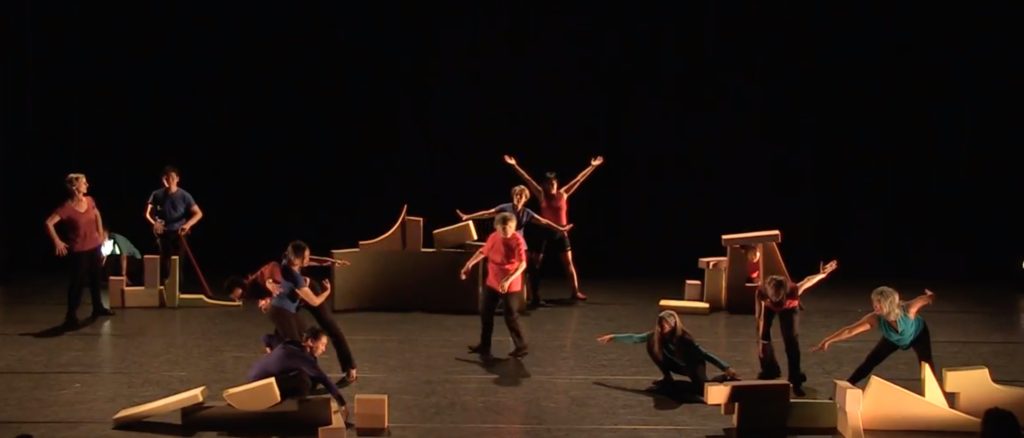
By Carolina Bergonzoni
At the core of my practice as a community-engaged dance artist is a focus on process rather than final product. This often means longer incubation, development and rehearsal periods as I invest time and energy in analyzing the community I am working with and figuring out what is needed for people to show up to a dance project. I always have a plan A, B, C and D in place, which prepares me to act in a responsive way and allows me to facilitate specifically for whoever is present.
Much of my work is informed by my training in Italy, where I grew up. In 2008, I entered a two-year program called Corso per Danzeducatore (Course for Dance Educators) in Bologna, and, upon graduation, became a Danzeducatore, a dance educator who specializes in creating community-engaged dance projects. The thoughtful analysis I learned to bring to my work — how to analyze a social context, to be flexible and to think in action — opens up the capacity to build meaningful relationships between participants and with the group throughout a project.

Franca Zagatti, the director of Corso per Danzeducatore, recently spoke to me about the challenges of developing a course that didn’t meet the expectations of students who presumed they would be given pre-made exercises and established protocols to follow. Zagatti’s challenges include encouraging each one to engage in the program and to accommodate students’ different needs and curiosities — exactly as they will do once they are working in the community-engaged projects that are the goal of the course.
Since its inception in the 1970s, community-engaged dance has been process-oriented and focused on inclusive practices. Among the skills it requires are the ability to self-reflect, observe, listen, dance, move, imagine and be in relationship with others. This practice is more than collaborative, it is participatory in nature; each participant, including the facilitator, is engaged in the process of creating, presenting and crafting their own dances. Community-engaged dance projects flourish as multiple voices speak, through dance, their personal experiences, with the facilitator’s ability to evaluate skills based on the community context and to recognize the difference between leading and instructing crucial.
Organizations such as UK-based People Dancing and the Italian DES — Danza, Educazione, Società (Dance, Education, Society/Community) are designed to support artists in articulating the principles, practices and core values of community-engaged dance. In Canada, the lack of formalized training and of national or provincial organizations to support community-engaged artists means there is a lack of definitions, expectations and standards around this practice. Yet, in Vancouver, where I have lived for seven years, the field has been gaining recognition since the early 2000s, thanks to the continued support of the Vancouver Board of Parks and Recreation, and the number of practitioners keeps growing.
Over the years, several community dancers — defined as dancers that start their training through community-engaged projects — have been hired in professional theatre projects. This has helped redefine the labels “professional” and “community,” which are often understood in simple binary terms. As well, there has been a shift from a focus on production to process-oriented practices within some training institutions. Julie Lebel, the artistic director of Vancouver’s Foolish Operations, would like to have community-engaged values taught in all dance training. This shift would allow for the future generation of artists — whether they are specifically oriented toward community-engaged practices or production-based performance — to have the experience of creating together, in relationship, and to take the risks of trying what might not work without worrying about the final product.

Veronica Berezowsky, who works with seniors and youth, attended a one-year program in community-engaged dance at Trinity Laban Conservatoire of Music and Dance in London. There she had the opportunity to reflect on her prior training as a dancer and assess her relationship with dance and movement. The program, she says, allowed her to find a deeper sense of connection with her own body and changed the way she approaches sharing dance with her community.
It took me years to truly shift my own perspective on dance. When I first discovered community-engaged practices, I questioned my beliefs of what dance and dancing bodies were; it was difficult to recognize the incredible beauty of bodies thinking in dance and developing an awareness of each other. Community-engaged dance focuses on the collaboration between each participant: dancers not only move as an ensemble, but they work toward creating together. It invites us to rethink our understanding of dance aesthetics and how dancing bodies look as they engage in dance, while also building new audiences and bringing dance into the community.
Through my training, I discovered how to create dance work collaboratively, learning and sharing with the people present in the room. I have seen how empowering the process of discovering or rediscovering the potential of creativity and dance can be for everyone involved. By creating work with people with different bodies, expertise and experiences, and from different cultures, I’ve learned a lot about dance-making: I now perceive my role as a choreographer as a conductor for creativity.
Carolina Bergonzoni is a dance artist, educator and scholar who works on building communities of movers and thinkers with people from 0 to 99+ years old.

